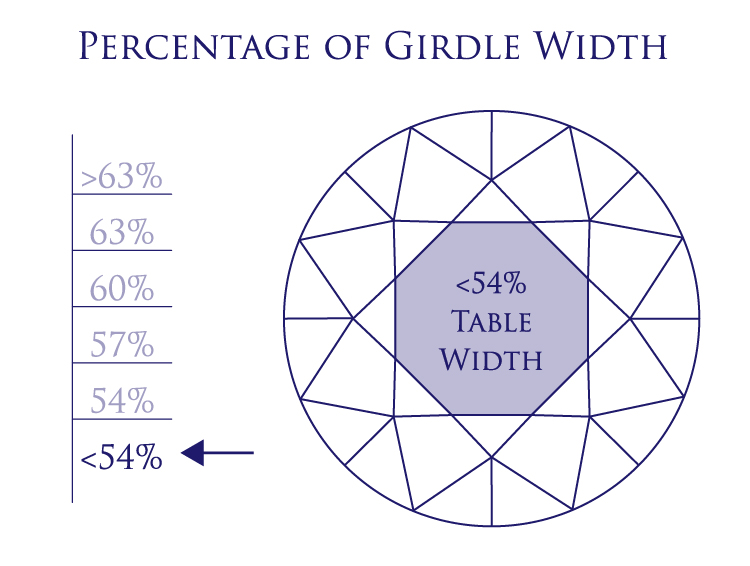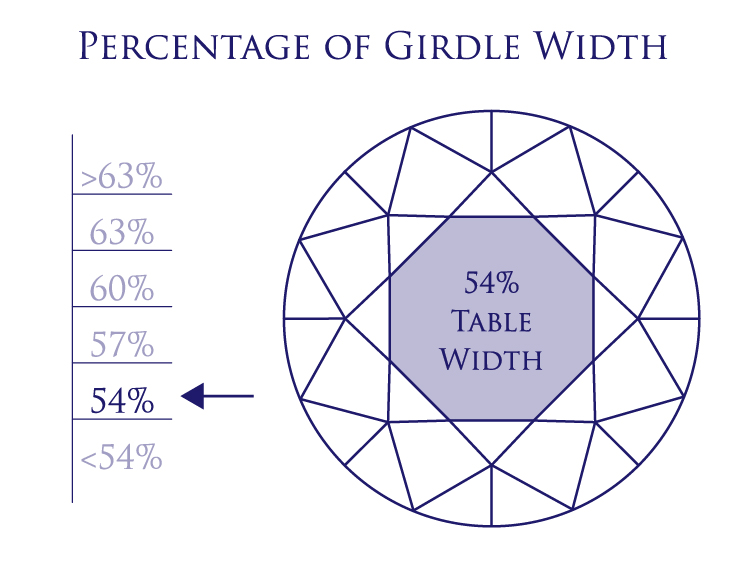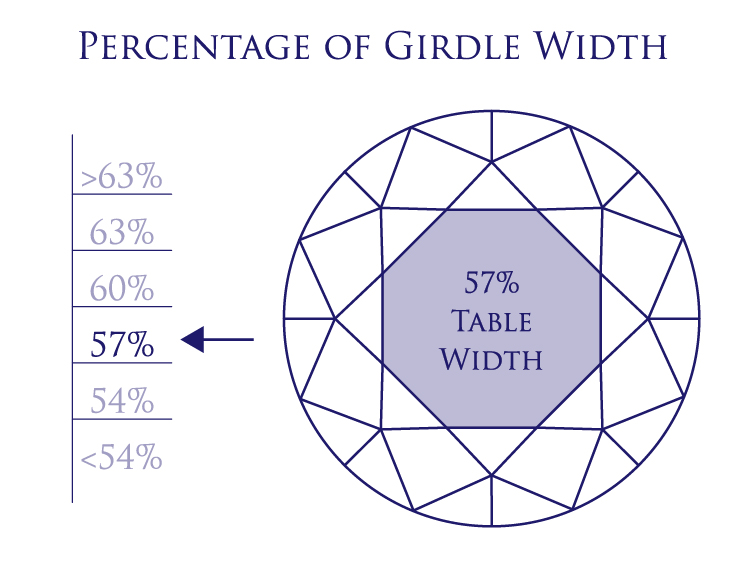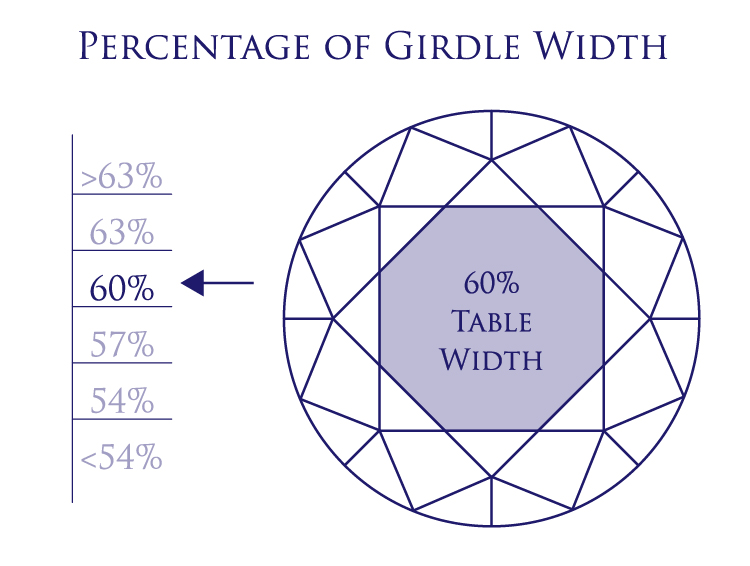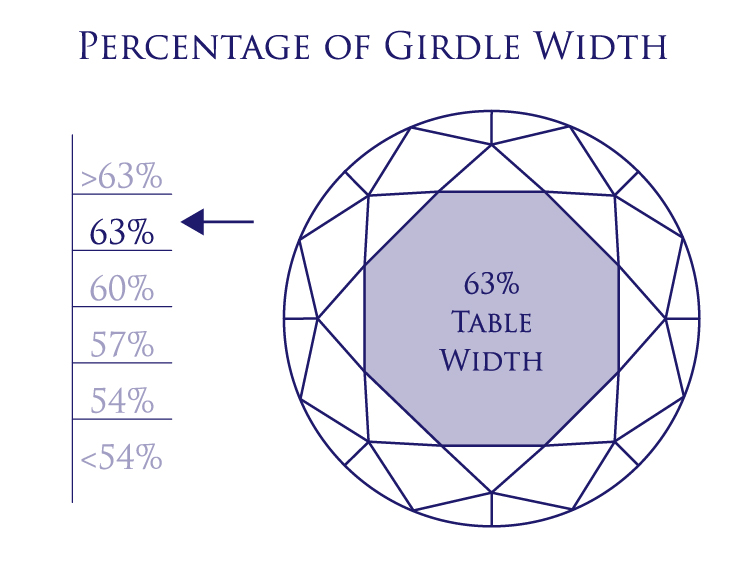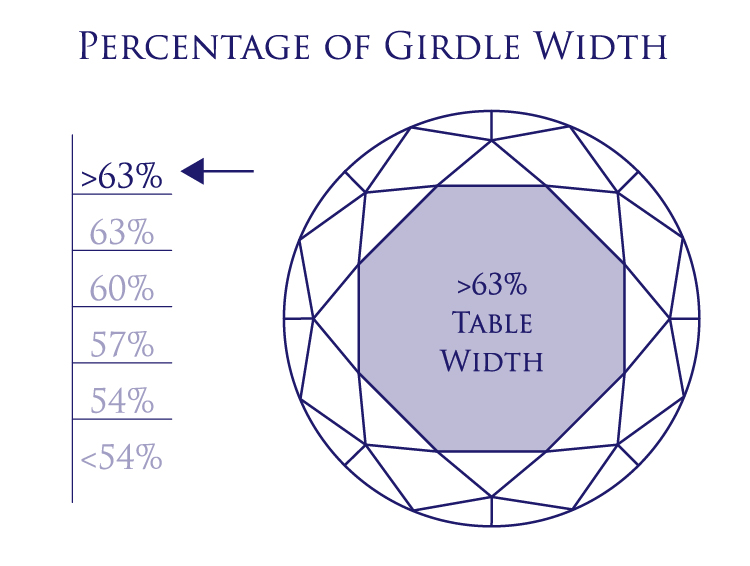5400 Laurel Springs Pkwy Suite 604 Suwanee, GA 30024

Diamond - Cut Explanation
-
Cut
Cut not only refers to the shape of the diamond, but also to the diamond’s proportions, symmetry and polish. The major components are the crown, girdle and pavilion. A round brilliant cut diamond has 57 or 58 facets, the 58th being the tiny flat facet at the bottom of the pavilion. The large, flat facet on the top is the table. The diamond’s proportions pertain to the relationships between table size, crown angle and pavilion depth. The combination of these relationships ultimately affects a diamond’s interaction with light.
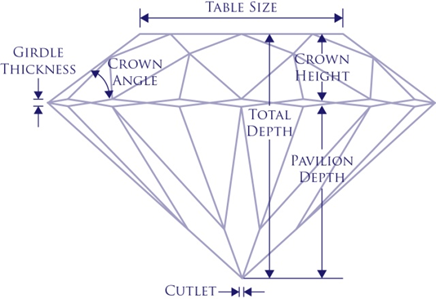
The distance from the girdle to the cutlet is known as the pavilion depth. An ideal cut diamond will reflect light off of one mirror-like facet to another, directing more light through the crown. If the pavilion depth is too shallow or too deep, light can escape through the bottom or sides of the diamond. This will make the diamond appear less brilliant.
Deep Cut
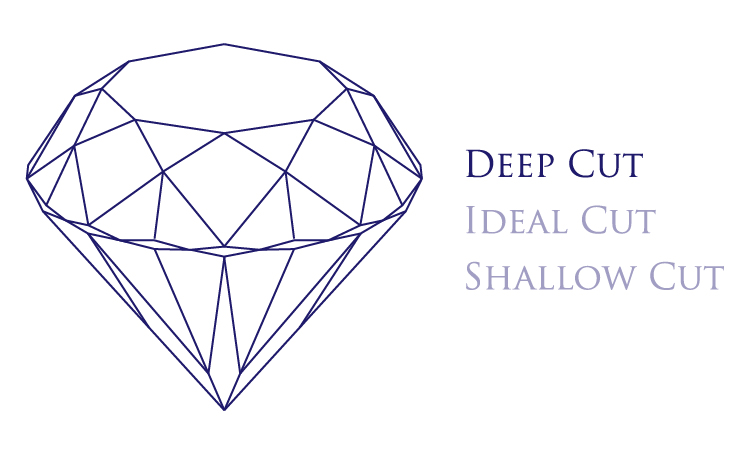
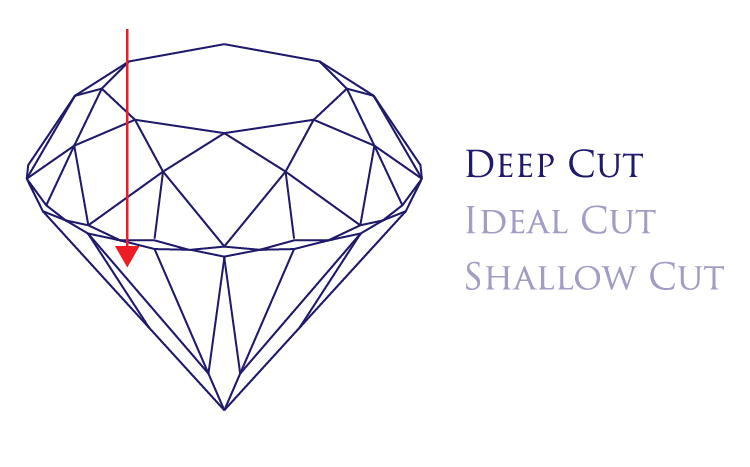
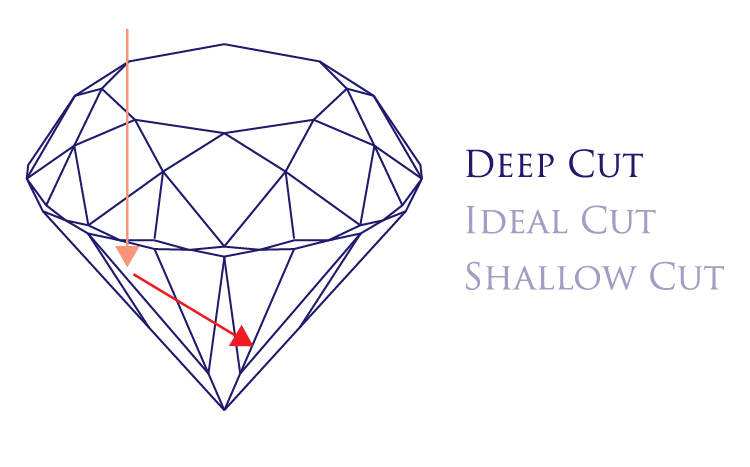
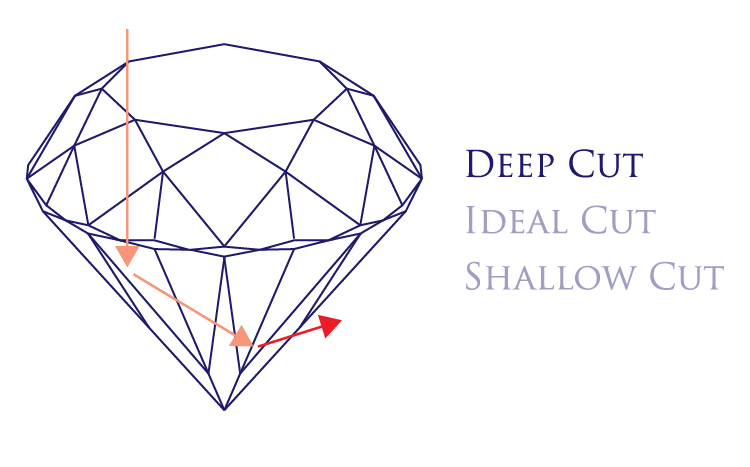
Ideal Cut
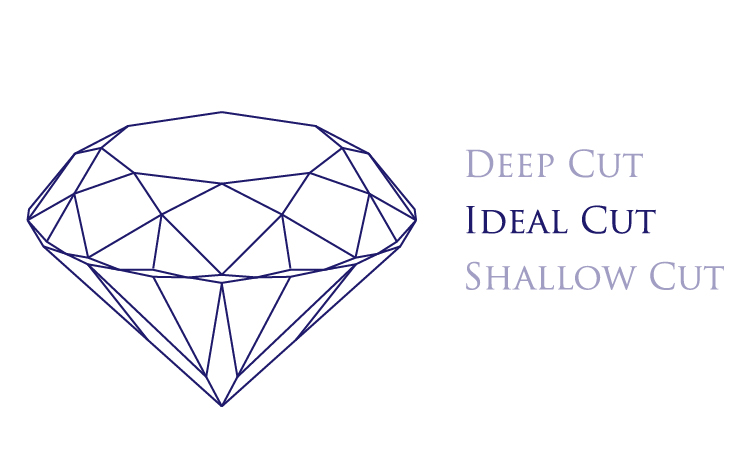
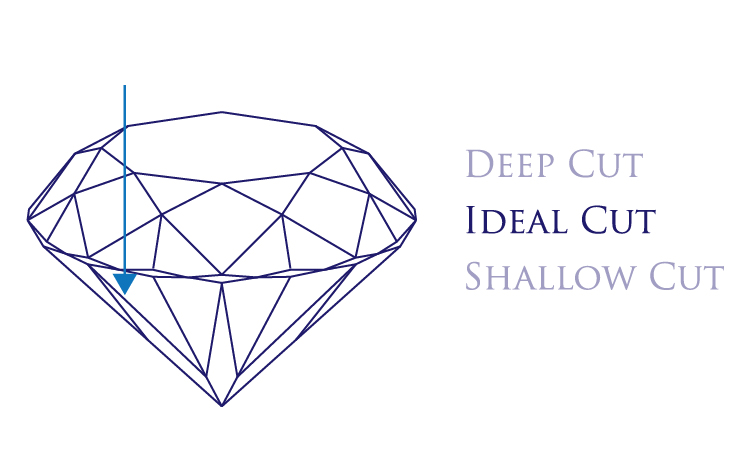
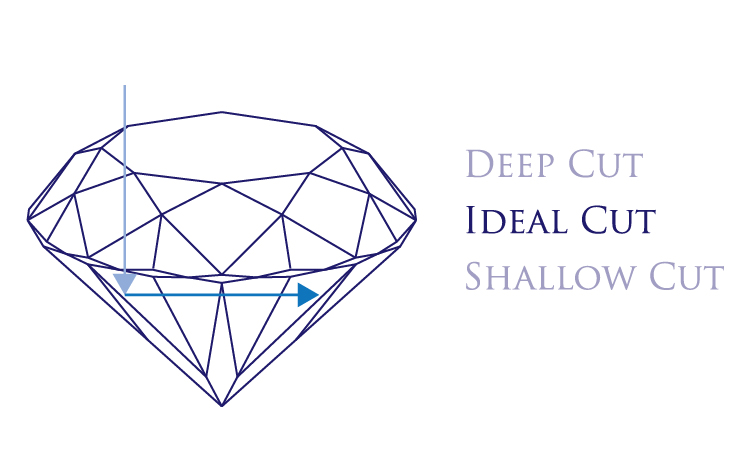

Shallow Cut
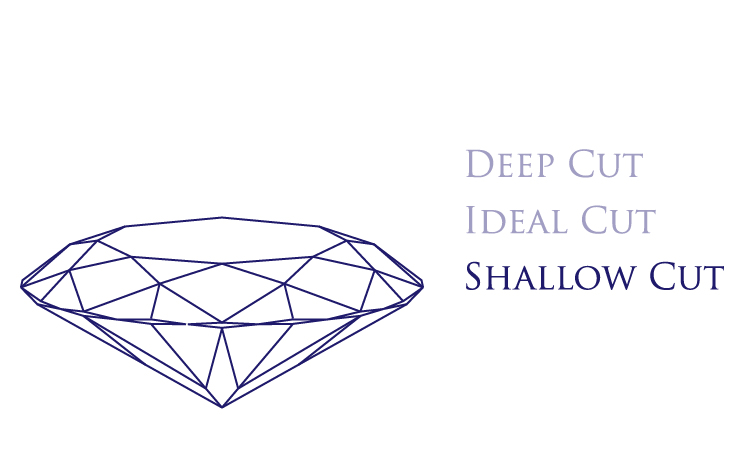
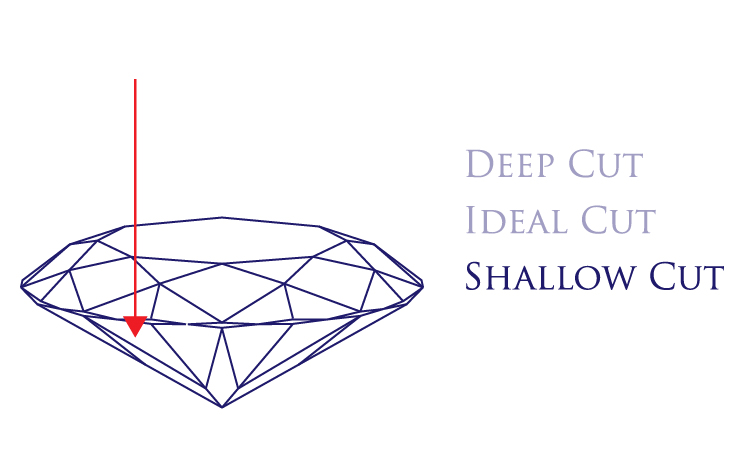
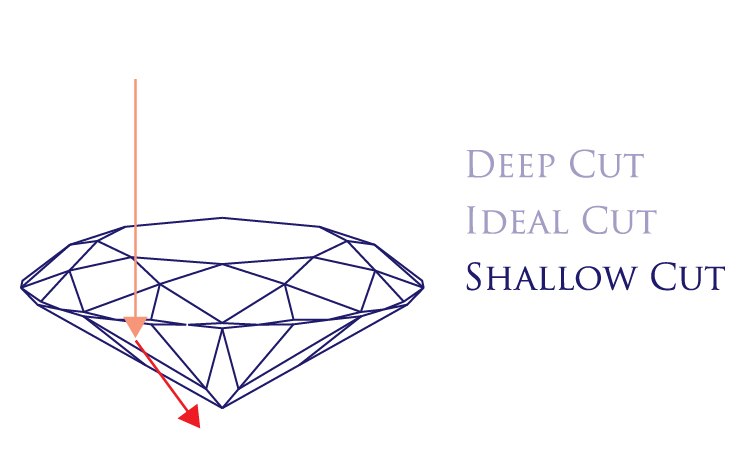
The proportions between the pavilion depth and table width also contribute to a diamond’s brilliance. To get the depth percentage, divide the pavilion depth of your diamond by the table width in millimeters. The optimal depth percentage for a round brilliant cut stone is between 57% and 64%.
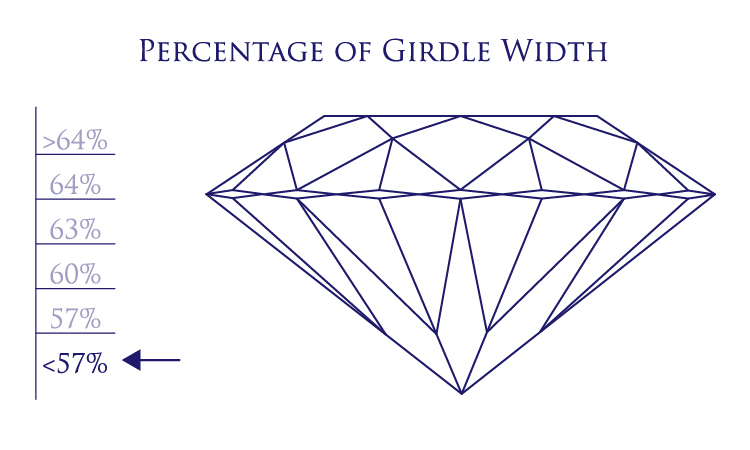




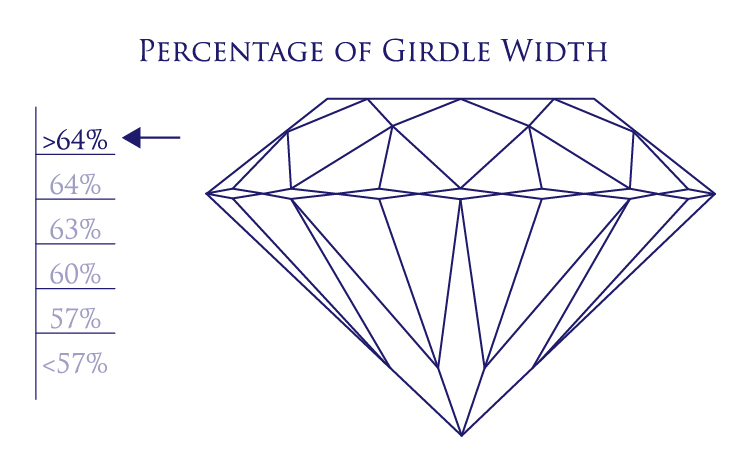
The table percentage refers to the proportions between the table width and the girdle width. The table width will never be the same width as the girdle because the crown angle takes up some of the percentage. The optimal table percentage is between 54% and 64%.
